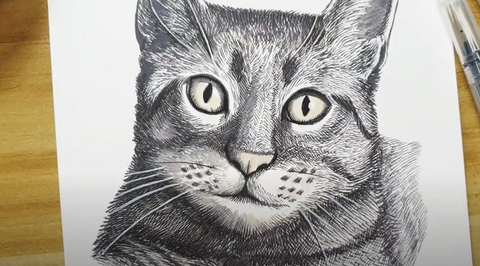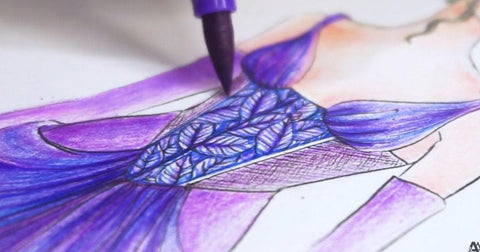Into The Creative Mind of Henri Matisse: His Art, Style, and Story
Last Updated: August 11, 2025
“An artist must possess Nature. He must identify himself with her rhythm, by efforts that will prepare the mastery which will later enable him to express himself in his own language.” – Henri Matisse
When we think of art luminaries of the 20th century, names like Picasso, Dali, and Warhol often come to mind. But one name that should never be overshadowed is that of Henri Matisse. This French artist, known for his revolutionary contributions to modern art, had a unique approach to creativity that has left an indelible mark on the art world. In this blog post, we will take a journey into the creative mind of Henri Matisse, exploring his art, style, and the captivating story behind his work.

Luxe, Calme et Volupté (1904)
Roots of Creativity: Henri Matisse's Journey to Artistic Awakening
Henri Émile Benoît Matisse was born on December 31, 1869, in Le Cateau-Cambrésis, a small town in northern France. A deep appreciation marked his early life for the arts, although he initially trained as a lawyer. During his recovery from appendicitis, he discovered his passion for painting, and he never looked back.
Matisse's early works were influenced by the traditional style of the time, particularly the works of the Old Masters. But as he continued to develop his craft, he began to break away from convention and explore new artistic horizons. He moved to Paris and enrolled at the Académie Julian, where he was exposed to the burgeoning art movements of the late 19th century.
Brushes and Beastly Colors: Matisse's Fauvist Frenzy
One of the most significant moments in Matisse's artistic journey was his involvement in the Fauvist movement. Fauvism, which means "wild beasts" in French, was characterized by bold, non-naturalistic colors and a disregard for traditional perspective. Matisse, along with artists like André Derain, became a crucial figure in this movement.

Femme au chapeau (Woman with a Hat), 1905
Matisse's work during the Fauvist period is a testament to his audacious approach to color. His paintings, such as "Woman with a Hat" (1905), shocked the art world with their vibrant and unconventional use of color.
Instead of attempting to replicate reality, Matisse aimed to evoke emotions through color and form. This marked a turning point in the history of art, as it challenged conventional notions of what constituted "good" or "realistic" art.
Cutting Through Conventions: Matisse's Bold Paper Artistry
As Matisse's career evolved, so did his artistic style. In his later years, he was afflicted by health problems that made it difficult for him to paint with traditional materials. However, rather than giving up on his art, Matisse adapted and created some of his most iconic works through a new medium: paper cut-outs and collages.

The Blue Nudes (1952)
The cut-outs, such as "Blue Nude II" (1952), are a testament to Matisse's mastery of form and color. He would meticulously cut out shapes from colored paper and arrange them into intricate compositions. This period of his work is a testament to the idea that limitations can inspire innovation and that creativity knows no bounds.
The Story Behind the Art: Matisse's Personal Struggles and Triumphs
Beyond his artistic innovations, the story of Henri Matisse's life is a compelling one. He faced personal struggles, including illness and financial difficulties, but his passion for art remained unwavering. His resilience in the face of adversity is an inspiring lesson in dedication to one's craft.

The Dessert: Harmony in Red (1908)
Matisse's art also reflected his deep love for life and the joy he found in the simple pleasures of everyday existence. His work often portrays scenes of leisure, dance, and vibrant color, capturing the essence of the human spirit.
Colors That Endure: Matisse's Timeless Impact on Art
Henri Matisse passed away on November 3, 1954, but his legacy lives on in the art world and beyond. His contributions to modern art continue to inspire generations of artists, and his innovative use of color and form has left an indelible mark on the creative landscape.

Le bonheur de vivre (The Joy of Life), 1905-1906
His art, style, and story are a testament to the power of creativity and the human spirit. His willingness to push boundaries, experiment with new forms, and find beauty in the unexpected have made him an enduring figure in the annals of art history. As we explore his work, we gain insight into the boundless possibilities of artistic expression and the profound impact one creative mind can have on the world.
Dancing with Colors: Be Bold, Be Like Matisse
In the ever-evolving world of art, Henri Matisse's journey reminds us that the creative path is not a straight line but a rich tapestry of experimentation, resilience, and innovation. His legacy inspires all artists, urging us to be like Matisse—to boldly embrace the unconventional, to dance with colors outside the lines, and to find beauty in the most unexpected places.

L'Atelier Rouge (The Red Studio), 1911
Just as Matisse fearlessly explored the boundaries of his art, so too can we explore the limitless possibilities of our creativity. In the spirit of this great artist, let us continue to push the boundaries, express our unique visions, and, in doing so, leave our mark on the canvas of the world. Henri Matisse beckons us to be artists unafraid to let our creative spirits soar!
Looking for more inspiration? Meet the talented artists of today on our Meet The Artist Behind The Art blog!






